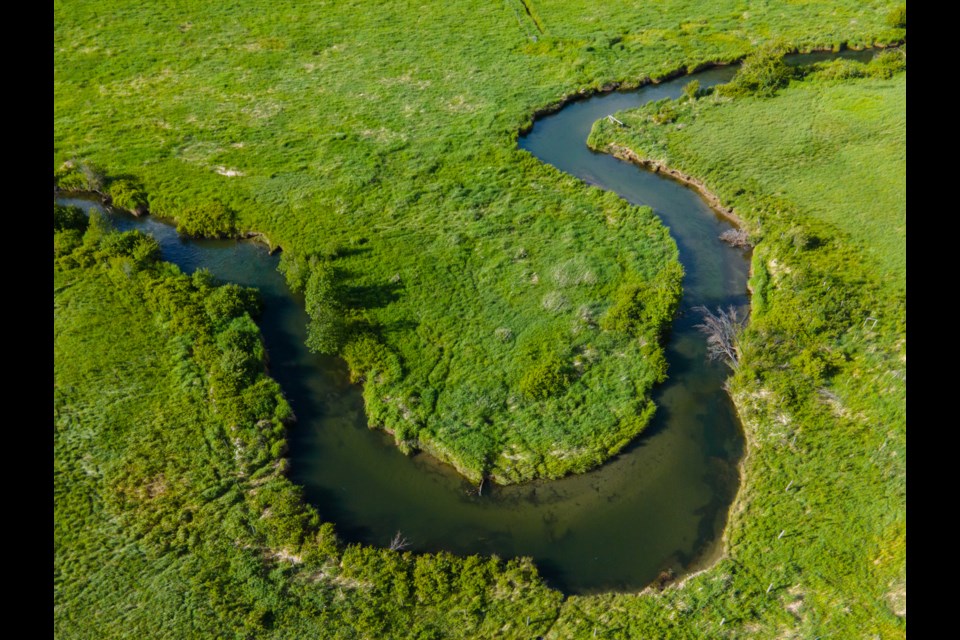The Nature Conservancy of Canada (NCC) will soon begin restoring habitat at Gates Creek, northeast of Pemberton and southwest of Anderson Lake.
The Gates Creek habitat restoration project will restore the ecosystem for salmon, improve creek stability, shade the creek and improve wetland habitat. The project has been in the works since 2021, when the NCC first purchased 111 hectares of land for conservation. The group recently added another parcel, bumping the total to roughly 130 hectares, increasing the project’s overall scope.
The NCC is a national non-profit which works to create solutions for biodiversity loss and climate change by “large-scale, permanent land conservation,” according to a press release.
The project includes engagement with the N’Quatqua First Nation, whose traditional territories Gates Creek is in.
Hans Herrmann Alvarez, west coast program manager for the NCC, said the work is important because of centuries of human-caused degradation.
“The system has been degraded over the turn of a century, with all the land conversion into agricultural lands," he said. "That happened not just at Gates Creek, but a lot of other systems have lost a lot of their ecological function by converting wetlands, flood plains and forests into agricultural fields."
By restoring the habitat, not only will salmon and other fish benefit, but the area is historically a place where different grizzly bear populations meet.
The NCC is still engaging with N’Quatqua, community stakeholders and experts while growing design concepts. Implementation will happen over multiple years.
Re-armouring an ecosystem
Restoring fish habitat requires repairing the riparian (streambank) area. Removing invasive species like reed canary grass along the stream bank and replacing them with native trees and bushes creates cooler habitat for sockeye, coho, chinook and pink salmon to escape the hot sun.
Salmon make their way to Gates Creek as they migrate from the Fraser River, the Fraser Canyon and Hell’s Gate, before reaching Seton, Anderson Lake and Gates Creek.
Restoring the riparian area also reduces erosion of stream banks. Unlike trees and bushes, invasive species lack strong root systems, allowing soil to slough away into the creek. But work for trees isn’t just along the bank—logs are also used as armour against erosion coming from the creek itself.
“Armouring parts of this stream with naturally occurring wood helps with that erosion and will also give some salmon cover habitat from predators to hide in and amongst the wood,” said Herrmann Alvarez.
Further away from the stream, fields are converted to a native flood-plain forest.
“You're restoring the function of an entire system," Herrmann Alvarez said. "So, to do a proper job at restoration, we would be focusing on these big ecological functions, and part of that is to restore these flooding capabilities of that entire system. The river doesn't really end where the river is, the river would be expanding in the spring and flooding the surrounding areas.”
Herrmann Alvarez explained the flooding attracts waterfowl and other species who depend on a floodplain, but said implementation can be difficult.
“What that looks like in practice is a bit harder to implement," he said. "While we would like to plan for the best restoration project, we're going to take it one step at a time and see what we can actually do.”
Through work with Coast to Cascades Grizzly Bear Initiative and other wildlife associations, Gates Creek was shown to be a “connectivity corridor” for grizzly bear populations from South Chilcotin and Stein Nahatlach.
The two populations traditionally met at Gates Creek for mating and socialization. It’s one of a few corridors which exist for grizzlies and restoration will preserve critical territory for the threatened populations.





